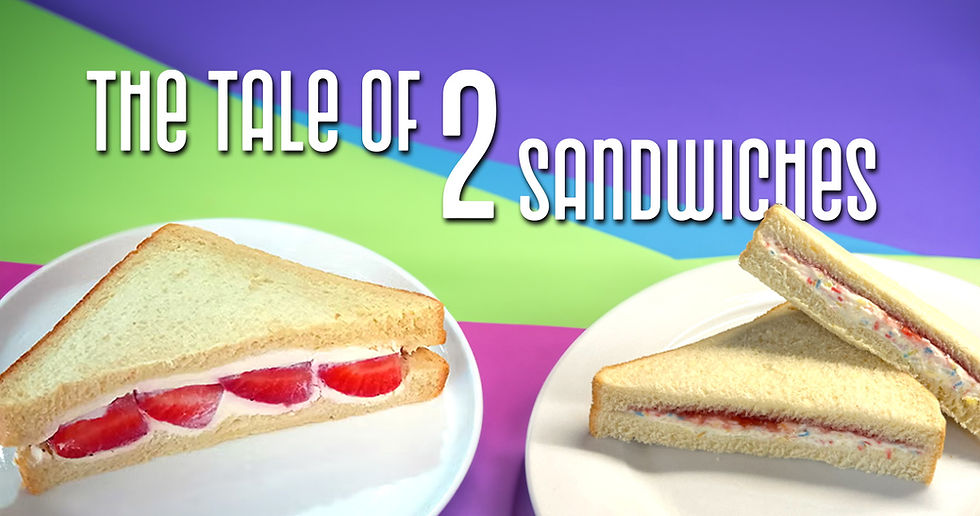Squeezed Wallets, Savvy Palates: Navigating the UK's Cost-Conscious Culinary Shift
- Rhys Bennett
- Mar 21
- 4 min read

The clink of coins in our pockets is sounding a little quieter these days, isn't it? The UK's economic climate, with its rising living costs, isn't just a headline; it's a dinner table reality. And, unsurprisingly, it's having a profound impact on what we eat and how we shop. But while budgets might be tightening, the ingenuity of the UK food industry is proving as robust as ever. Let's delve into this fascinating intersection of economics and gastronomy.
The Consumer Response: Adapting to Austerity
First off, let's acknowledge the elephant in the pantry: inflation. It's not just the petrol prices that are making us wince. From the humble loaf of bread to the weekly shop, the pinch is being felt across the board. Consumers, ever adaptable, are responding with a mix of pragmatism and resourcefulness. We're seeing a resurgence of the "make do and mend" mentality, albeit with a modern twist. The reality is that weekly budgets are being stretched, and every purchase is being scrutinised more than ever. This isn't just a temporary blip; it's a recalibration of consumer spending habits.
Gone are the days of brand loyalty for brand loyalty's sake. Now, it's a battle of the budget. Own-brand and private-label products are enjoying a renaissance, as savvy shoppers seek out quality without the premium price tag. Supermarket aisles are becoming battlegrounds, with consumers armed with calculators and a keen eye for value. And who can blame them? Every penny saved is a penny earned, or at least a penny that can go towards that much-needed cup of tea. We're also seeing a significant increase in the use of comparison websites and apps, where consumers can check prices across different retailers. This shows a real shift in how people are engaging with their food shopping.
But it's not all about trading down. There's also a noticeable shift towards home cooking and meal prepping. The allure of a home-cooked meal, both for its affordability and its comforting familiarity, is proving irresistible. Social media is awash with budget-friendly recipes and tips, turning everyday cooks into culinary strategists. We're seeing a delightful blend of tradition and innovation, with families rediscovering the joy of batch cooking, using up leftovers, and stretching ingredients further. Think of the resurgence of slow cookers and air fryers, both championed for their cost-effectiveness and ability to create delicious, hearty meals from affordable ingredients.
And let's not forget the rise of the deal hunters. Apps and loyalty schemes are becoming essential tools in the modern shopper's arsenal. We're seeing a surge in people actively seeking out discounts, vouchers, and special offers. It's a testament to the resilience of the British spirit – we're not just accepting the rising costs; we're actively fighting back. This isn't just about saving a few pounds; it's about feeling empowered and in control of our spending.
Industry Innovation: Adapting to Changing Demands
Now, for the food industry, this presents both challenges and opportunities. On the one hand, there's pressure to keep prices down, while on the other, there's a chance to innovate and cater to the evolving needs of cost-conscious consumers.
One area ripe for innovation is the development of affordable, nutritious, and convenient food products. Think ready meals that are both budget-friendly and packed with goodness, or snacks that offer value without compromising on taste. There's a real chance to create products that resonate with consumers on both a practical and emotional level. We are also seeing growth in subscription services that provide affordable meal kits, which is an interesting area of growth.
Sustainability is also taking on a new dimension. Minimising food waste is no longer just an ethical choice; it's a financial imperative. Companies are exploring innovative ways to extend the shelf life of products, utilise surplus ingredients, and reduce packaging waste. This not only benefits the bottom line but also resonates with environmentally conscious consumers. We are seeing more companies use "ugly" produce, and other ways to reduce waste and keep costs down.
The Tech Advantage: Digital Solutions and Future Trends
And let's not forget the power of technology. Companies are leveraging data analytics to understand consumer behaviour, optimise pricing strategies, and personalise offers. Apps are being developed to help shoppers compare prices, find deals, and plan their meals. It's a digital revolution happening in the supermarket aisles. We are also seeing a rise in online food delivery services that offer competitive pricing and bulk purchasing options.
In essence, the UK's cost-conscious culinary shift is a fascinating study in adaptation and innovation. It's a reminder that even in challenging times, the human spirit – and the British palate – remains resilient. It's also a huge opportunity. The food industry has a chance to create products and services that not only meet the immediate needs of consumers but also contribute to a more sustainable and equitable food system.
So, how are you navigating this changing landscape? What innovative solutions are you seeing in the food industry? Let's spark a conversation and share our insights. After all, a problem shared is a problem halved, or at least a problem that can be tackled with a well-planned shopping list and a dash of culinary creativity.



